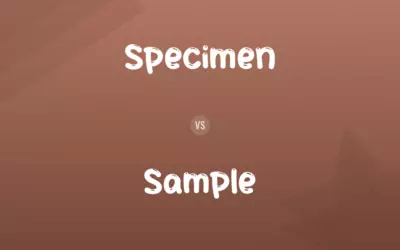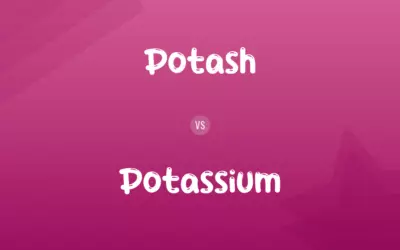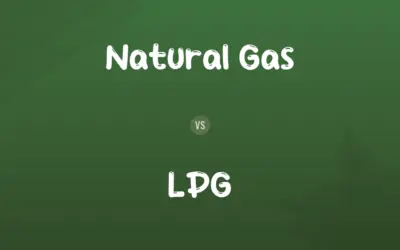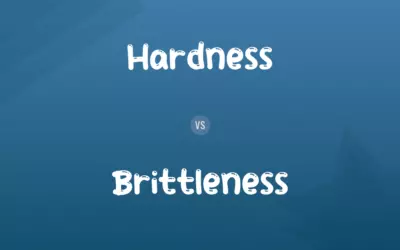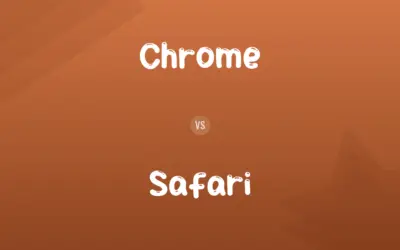Misting vs. Fogging: Difference and Comparison
Edited by Muazma Batool — By Muneeza Rehman — Published on April 16, 2024
Misting involves spraying fine water droplets to cool or humidify, while fogging produces even finer droplets, creating a fog-like effect for cooling, humidification, or pesticide application.

Difference Between Misting and Fogging
Misting and fogging are techniques used to disperse liquid into the air, but they serve different purposes and operate on different scales of droplet size. Misting systems spray water droplets that are fine but larger than those produced by fogging systems. Fogging, on the other hand, creates a much finer mist, almost to the point of creating a visible fog. This finer dispersion allows the droplets to stay airborne longer and cover a wider area, making it ideal for applications such as pesticide application, disinfection, and creating visual effects.
Muneeza Rehman
Apr 16, 2024
Misting method is often used in outdoor cooling, humidification in greenhouses, or for dust suppression, where the slightly larger droplets can effectively lower temperatures or add moisture to the air without saturating surfaces or the environment. In fogging, the tiny droplets produced by fogging can penetrate more effectively into nooks and crannies, making this technique preferred for thorough coverage in pest control or sanitization efforts.
Muneeza Rehman
Apr 16, 2024
Both methods can be used for cooling and humidifying, the choice between misting and fogging depends on the specific needs of the application, such as the desired droplet size, the area that needs to be covered, and whether surface wetting is acceptable. Misting systems are more commonly seen in public spaces, like patios or theme parks, for cooling, whereas fogging is often used in agricultural or industrial settings for more specialized applications.
Muneeza Rehman
Apr 16, 2024
Misting vs. Fogging Comparison Chart
Main Uses
Cooling, humidification, dust suppression
Pesticide application, disinfection, visual effects
Muneeza Rehman
Apr 16, 2024
Surface Wetting
More likely to wet surfaces
Less likely to wet surfaces due to finer droplets
Muneeza Rehman
Apr 16, 2024
Application Settings
Outdoor cooling, greenhouses
Agriculture, industrial sanitization
Muneeza Rehman
Apr 16, 2024
Efficiency
Effective in direct cooling and humidification
High efficiency in coverage and penetration
Muneeza Rehman
Apr 16, 2024
Misting vs. Fogging Definitions
◉Misting
Involves direct application.
Misting fans are popular at outdoor events for immediate cooling.
Elijah
Feb 27, 2024
◉Misting
Sprays larger water droplets for cooling.
Outdoor restaurants use misting systems for patio cooling.
Muneeza Rehman
Feb 27, 2024
◉Fogging
Produces a visible fog.
Fogging can create atmospheric effects for stage performances.
Muneeza Rehman
Feb 27, 2024
◉Misting
Can suppress dust in construction sites.
Misting nozzles reduce dust during demolition work.
Henry
Feb 27, 2024
◉Fogging
Creates a fine mist for pesticide application.
Fogging machines distribute pesticides evenly in greenhouses.
Nolan
Feb 27, 2024
◉Misting
Used in greenhouses for humidification.
Misting helps maintain optimal humidity levels for plants.
Muneeza Rehman
Feb 27, 2024
◉Fogging
Covers a wide area effectively.
Fogging is used in warehouses to control pest infestations.
William
Feb 27, 2024
◉Misting
May wet surfaces.
The misting system can leave droplets on tables and chairs.
Muneeza Rehman
Feb 27, 2024
◉Fogging
Less likely to wet surfaces.
Fogging sanitizers evaporate quickly, leaving no residue.
Muneeza Rehman
Feb 27, 2024
◉Misting
A mass of fine droplets of water in the atmosphere near or in contact with the earth.
Muneeza Rehman
Feb 26, 2024
◉Fogging
Condensed water vapor in cloudlike masses lying close to the ground and limiting visibility.
Muneeza Rehman
Feb 26, 2024
◉Misting
Water vapor condensed on and clouding the appearance of a surface.
Muneeza Rehman
Feb 26, 2024
◉Fogging
A mist or film clouding a surface, as of a window, lens, or mirror.
Muneeza Rehman
Feb 26, 2024
Misting vs. Fogging Frequently Asked Questions
Are there health concerns associated with misting or fogging?
Inappropriate use, especially of fogging with chemical additives, can pose health risks if inhaled or if it comes into contact with skin. It's important to follow safety guidelines and use protective equipment as needed.
Muneeza Rehman
Apr 16, 2024
Do misting and fogging systems require different water qualities?
Yes, fogging systems often require demineralized or distilled water to prevent nozzle clogging and ensure the fine mist quality, whereas misting systems can be more tolerant of water quality.
Muneeza Rehman
Apr 16, 2024
Can misting and fogging affect plants or materials nearby?
Yes, excessive use of either system can lead to moisture damage or encourage mold growth on sensitive materials or plants, highlighting the need for controlled application.
Lucas
Apr 16, 2024
What maintenance is required for misting and fogging systems?
Regular cleaning to prevent nozzle clogging and checks for leaks or malfunctions are essential. Fogging equipment may require more frequent maintenance due to its finer mechanisms.
Olivia
Apr 16, 2024
Can I use tap water in my home fogging or misting system?
For misting systems, tap water is often suitable, though it can lead to mineral buildup over time. Fogging systems generally require purified or distilled water to prevent nozzle blockage and ensure the mist's quality.
Henry
Apr 16, 2024
Can misting and fogging be used indoors?
Fogging is more commonly used indoors for disinfection or pest control due to its fine droplet size, while misting is typically used outdoors or in large indoor spaces like greenhouses.
Muneeza Rehman
Apr 16, 2024
How do environmental conditions affect misting and fogging?
High humidity can reduce the effectiveness of both techniques in cooling, but fogging's finer droplets are less impacted by wind and can be more effective in still air or enclosed spaces.
Muneeza Rehman
Apr 16, 2024
How energy efficient are misting and fogging systems?
Efficiency varies by system design and purpose. Fogging systems, especially ultrasonic ones, can be highly energy efficient, while misting systems may consume more water and energy, especially if used for cooling larger outdoor areas.
Muneeza Rehman
Apr 16, 2024
Is it safe to use fogging for pest control around pets and children?
Safety depends on the chemicals used. It's crucial to choose pet- and child-safe products and follow the manufacturer's guidelines for application and re-entry times.
Muneeza Rehman
Apr 16, 2024
How do temperature and wind affect the effectiveness of misting and fogging?
High temperatures can increase the cooling effect of misting but may cause fog to evaporate too quickly. Wind can disperse mist and fog, reducing their effectiveness and coverage.
Levi
Apr 16, 2024
Content Creators
Written by
Muneeza RehmanAt Comparisons.wiki, Muneeza skillfully navigates the vast sea of information, ensuring clarity and accuracy as the lead content editor. With a keen eye for detail, she curates every comparison to enlighten and engage readers.
Edited by
Muazma BatoolAs a content editor, Muazma Batool is not just a grammar guru but a creative mastermind who breathes life into every word. With an eagle eye for detail and a passion for storytelling, she transforms bland text into engaging content that captivates audiences and drives results.






